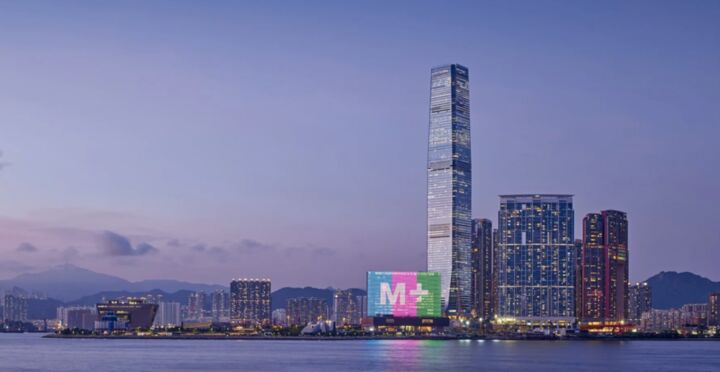 © M +, Hong Kong
© M +, Hong Kong
Finally, Hong Kong's M+ museum is on the verge of opening. M+ will be one of Hong Kong's largest museums when it opens on November 12, and it has the potential to become one of Asia's most prominent contemporary art institutions. It is intended to be a big addition to the region's art scene, with 700,000 square feet of area (65 000 m2). However, the institution's leadership has experienced fast change amid a succession of delays, and the run-up to its debut has been overshadowed by controversy.
What makes M + such an interesting museum to visit?
In Hong Kong and mainland China, there are numerous large museums—the West Bund location of Shanghai's Long Museum, for example, measures 355,000 square feet (33 000 m2). With 700,000 square feet (65 000 m2) of area, M+ will be near twice the size of the Long Museum. (By contrast, it's just a smidgeon smaller than New York's recently expanded Museum of Modern Art.) M+, like the Tate Modern in London and the Centre Pompidou in Paris, may become a destination—not just for Hong Kongers, but also for international art lovers—due to its size. However, size is simply one indicator of a museum's importance. Another, more significant factor is the work it intends to exhibit.
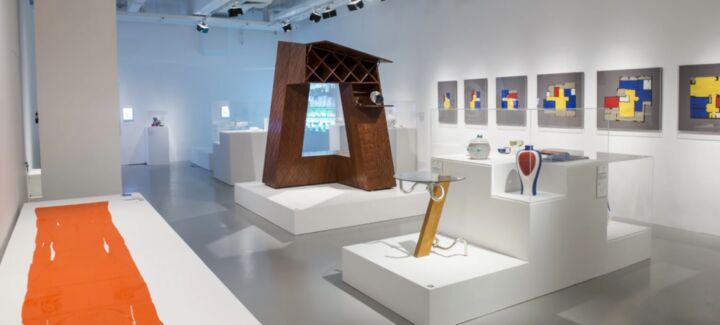 © M +, Hong Kong
© M +, Hong Kong
A promise of independence from censorship is one of the reasons the M+ museum has been so attentively followed. While museums in China have difficulty presenting certain types of contemporary art that officials consider overly critical of the government, institutions, and galleries in Hong Kong can theoretically show more clearly political art. Recent events in the city have artists anxious about whether M+ will be able to hold all of the events it has planned. But we'll get to that later.
What will M+ have to offer?
M+ will be devoted to modern and contemporary art in general, with a concentration on work created in and around Hong Kong in the twentieth and twenty-first centuries. It already has almost 8,000 pieces in its collection, with many of them acquired via the efforts of collectors. Uli Sigg, a Swiss businessman, and diplomat who rose to prominence as one of the finest collectors of Chinese art in the 1990s, donated more than 1,400 works from his collection to M+ in 2012. The museum's facilitator, the West Kowloon Cultural District Authority, also gave him $22.7 million for 47 other paintings.
"Hong Kong is essential because Chinese artists can also engage with their own public," Sigg told ArtAsiaPacific at the time. "Over 30 million mainland Chinese go to Hong Kong each year, and M+ will be that one huge item beyond shopping!" It's obvious that other collectors have had the same idea. M+ has received two significant donations from collectors in the last year, notably Hallam Chow and William and Lavina Lim. The Lims donated 90 works to the museum, including works by Haegue Yang and Lee Bul, and Hallam Chow contributed works by Chim Pom, Liang Yuanwei, Shioyasu Tomoko, and others.
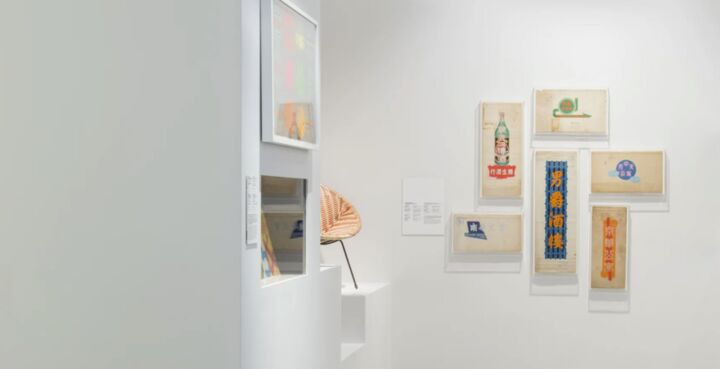 © M +, Hong Kong
© M +, Hong Kong
In 2021, a debate cast doubt on director Suhanya Raffel's claims that M+ will be able to hold exhibitions critical of the Chinese government. Ai Weiwei's photograph Study of Perspective: Tiananmen (1997), which was added to the museum's collection, was at the center of unfavorable media attention that swirled around the museum before it revealed its opening dates. The photograph, which is part of Ai's "Study of Perspective" series (1995–2017), shows the artist sticking up his middle finger at a Beijing plaza where the Chinese government ruthlessly suppressed a student movement against political corruption in 1989. As part of the Sigg donation, the photograph was added to the museum's collection.
The South China Morning Post said that pro-China news agencies jumped on the Ai work, despite the fact that it was not slated to appear in the inaugural exhibitions. In response to questions about whether the museum would follow China's national security law, Henry Tang Ying-yen, chairman of the West Kowloon Cultural District Authority, stated that the art district "will absolutely uphold the law, comply with the Basic Law, local laws, and the national security law." M+ has agreed not to display the image. M+ then removed an image of Study of Perspective: Tiananmen from its website in September. M+ was part of a string of institutions that "have hurried to snuggle up to China, bowing and scraping before the great growing authoritarian power, bursting with flattery at every step".
Behind the scenes at M +, who else is involved?
Suhanya Raffel, the current director of M+, has proven to be a transformative force in the Australian art landscape in her roles as director of the Art Gallery of New South Wales in Sydney and the Queensland Art Gallery in Brisbane. But she isn't the first person to lead M+ since the museum's construction began a decade ago.
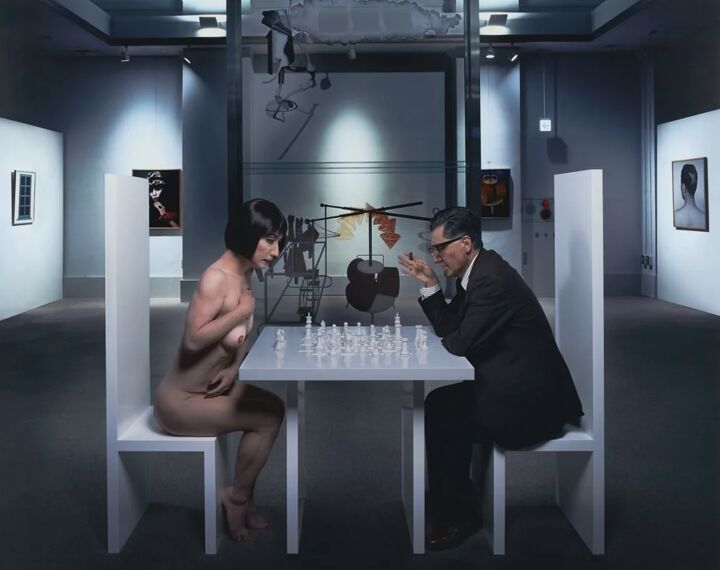 M +, Hong Kong, © Morimura Yasumasa, courtesy Shugo Arts
M +, Hong Kong, © Morimura Yasumasa, courtesy Shugo Arts
Lars Nittve, the museum's first director, has held positions of leadership in the Moderna Museet in Stockholm and the Louisiana Museum of Modern Art in Humlebaek, Denmark. Beginning in 2012, Nittve was the one who spearheaded attempts to considerably expand the museum's collection. Nittve unexpectedly left the museum in 2015, not long after the project's launch date was moved back to 2019—a remarkable move given that museum directors rarely leave before significant structures or expansions are completed. "I have to recognize that after five years here, there are still another four years of really hard work remaining till the opening of M+," he said, implying that the effort to open M+ was proving unexpectedly difficult.
In reality, until last year, M+'s debut was shrouded in a cloud of doubt. The museum's delay in 2015—it was supposed to open in 2017 at the time—was due to construction problems; 2019 came and went, and the museum still hadn't opened. Then, in 2020, the epidemic postponed its launch once more. There were resignations amid the delays. Tobias Berger, M+'s senior curator, left in 2015. Then, in 2019, five more executive team members resigned.
What is the location of M+?
M+ will be located in Hong Kong's West Kowloon Cultural District, in the midst of an arts district that includes the Hong Kong Palace Museum and the Xiqu Centre, which accommodates theatrical and opera events. Herzog & de Meuron, who are also responsible for the Broad in Los Angeles and the Pérez Art Museum in Miami, designed the museum's structure. Snhetta, another favorite of institutional directors, designed SFMOMA's enlargement and was one of the firms the firm beat out in a competition to build the museum.
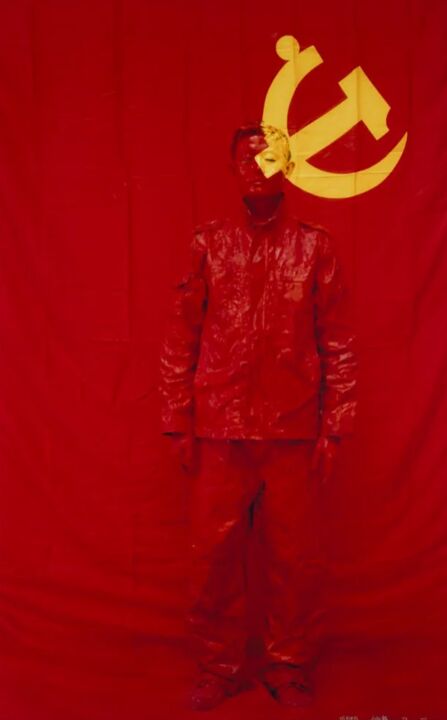 M + Sigg Collection, Hong Kong. By donation, © Liu Bolin
M + Sigg Collection, Hong Kong. By donation, © Liu Bolin
The museum, designed by Herzog & de Meuron, is shaped like an inverted T and faces Hong Kong's Victoria Harbour. The tall museum is designed to resemble "an Asian version of Tate Modern," except "more radical," according to Jacques Herzog, who spoke to The Guardian in October. The cost of the 16-story structure was initially estimated to be 21.6 billion Hong Kong dollars ($2.8 billion)—and it only grew threefold during construction. In addition to cinema theaters and a roof garden, the museum presently has 33 galleries. Some offices are on the 11th floor, offering amazing views of Hong Kong to certain employees.
When M + opens its doors, what will it be on display?
The Sigg contribution will be the center of attention when M+ opens its doors to the public on November 12. The show, titled "From Revolution to Globalisation," recounts China's progress since the 1970s through pieces by Huang Yong Ping, Zhang Xiaogang, and other notable artists. Other exhibitions include examinations of Hong Kong architecture and Asian artistic networks, as well as Antony Gormley's Asian Field project, for which the artist and residents of what is now Guangzhou's Huadong Town district created 200,000 clay figurines.
The sheer volume of work on display threatens to overwhelm. Residents of Hong Kong will be able to visit the museum for free for a year after it opens, which is a welcome bonus for the city.


 Selena Mattei
Selena Mattei